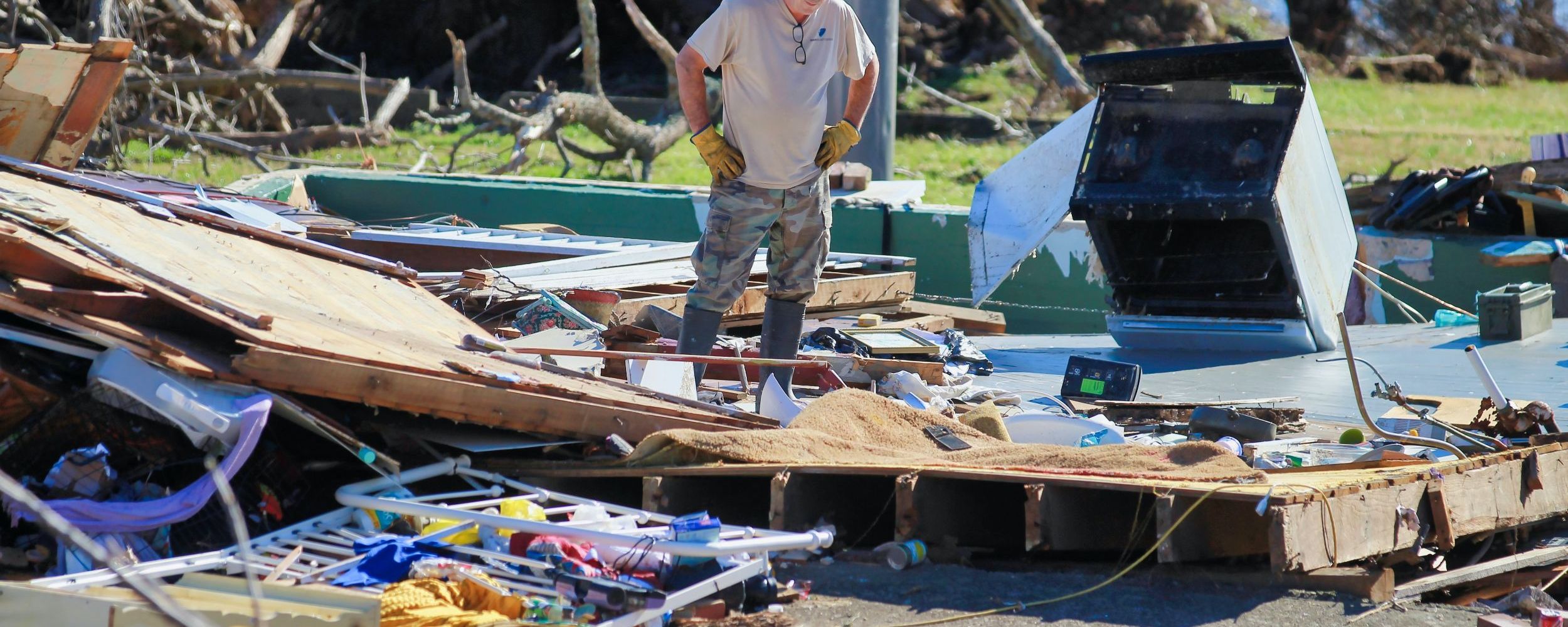Casualty Losses: How to Claim Deductions and Avoid Pitfalls
31 January 2023
Every year, the United States experiences natural and manmade disasters, ranging from hurricanes and earthquakes to wildfires and electrical grid failure. If you're unlucky enough to suffer a disaster-related loss, you'll need to understand the federal income tax rules to determine whether you're eligible for a casualty loss deduction.Personal Casualty Loss Deduction Basics
You can potentially claim an itemized deduction for a personal casualty loss that's not covered by insurance. We say potentially, because the following two rules may prevent a write-off:
- You can only deduct personal casualty losses if they're due to a federally declared disaster. The IRS provides an updated list of federally declared disaster areas. Conversely, if your basement floods because you accidentally left the bathtub faucet running for two days, you get no tax deduction.
- Assuming your personal casualty loss was due to a federally declared disaster, you must first reduce it by $100. Then, you must further reduce it by an amount equal to 10% of your adjusted gross income (AGI). AGI includes all taxable income items and selected deductions, such as those for IRA contributions, self-employed retirement plan contributions, HSA contributions and student loan interest.
For example, suppose you incur an unreimbursed $50,000 personal casualty loss due to a hurricane in a federally declared disaster area. If your AGI for the year is $150,000, your itemized deduction for the loss is only $34,900 ($50,000 minus $100 minus 10% of $150,000). You'd get no deduction if your loss before the two required subtractions is $15,100 or less ($100 plus 10% of $150,000).
In any case, you have no chance for a deduction unless you itemize.
Special Deduction Timing Rule
Let's say you have a deductible personal casualty loss from a 2023 event after subtracting $100 and 10% of your AGI. If the loss was caused by a disaster in a federally declared disaster area, a special rule allows you to claim your rightful deduction on either:
- Your return for the year the casualty event actually occurs, or
- An original or amended return for the year before the casualty event.
In effect, the deduction timing rule allows you to claim the deduction in the year when it's most beneficial. For example, suppose your 2022 AGI was much lower than your expected 2023 AGI will be. In early 2023, you have a significant casualty loss from an event in a federally declared disaster area. In which tax year should you take the personal casualty loss deduction? In this situation, claiming the loss on your 2022 federal income tax return would result in a much bigger deduction than if you claimed the loss on your 2023 return. Plus, if you claim the deduction in 2022, you won't have to wait until after you've filed your 2023 return sometime next year to claim your rightful tax savings.
Deductions for Business-Related Casualty Losses
If you have disaster-related losses to business assets, you don't have to worry about the $100 subtraction rule or the 10%-of-AGI subtraction rule. Instead, you can deduct the full amount of your uninsured loss as a business expense.
As with personal casualty losses, you have the option of claiming deductions for losses that occur in a federally declared disaster area on either:
- Your return for the year the disaster occurs, or
- An original or amended return for the year before the disaster occurs.
Involuntary Conversion Gains
Beware: When you have insurance coverage for disaster-related property damage — under a homeowners, renters or business policy — you could have a taxable gain instead of a deductible casualty loss. This can happen when the insurance proceeds exceed the tax basis of the damaged or destroyed property. Your basis normally equals the cost of the property, including improvements, reduced by any depreciation deductions you may have claimed for business or rental use of the property.
Your gain is called an involuntary conversion gain. That's because your damaged or destroyed property is involuntarily converted into cash insurance proceeds.
For instance, you could have a significant involuntary conversion gain if your highly appreciated vacation home was heavily damaged or destroyed and your insurance coverage greatly exceeds what you paid for the property when you bought it years ago.
Sadly, you can have a taxable involuntary conversion gain even if the insurance company doesn't fully compensate you for the pre-casualty value of the property. As long as the insurance proceeds exceed your tax basis, you have a gain for federal income tax purposes.
Special Tax-Saving Election
If you have an involuntary conversion gain, you generally must report it as such on your federal income tax return unless you:
- Elect the special gain deferral privilege, and
- Make sufficient expenditures to repair and/or replace the damaged or destroyed property with similar property by the applicable deadline.
You generally should make the special gain deferral election when it's available. If you make the election, you'll have a taxable gain only to the extent the insurance proceeds exceed what you spend to repair or replace the damaged or destroyed property.
Important: The expenditures for repair and/or replacement generally must be made within the period beginning on the date the property was damaged or destroyed and ending two years after the close of the tax year in which you have the involuntary conversion gain.
Principal Residence Involuntary Conversion Gains
Special taxpayer-friendly federal income tax rules apply to involuntary conversion gains on principal residences. Specifically:
- You can use the principal residence gain exclusion break to reduce or eliminate the involuntary conversion gain. The maximum gain exclusion is $250,000 ($500,000 for a married couple filing jointly). To qualify for the maximum exclusion, you must have owned and used the property as your main home for at least two out of the last five years.
- If your residence is damaged or destroyed by an event in a federally declared disaster area and you still have an involuntary conversion gain after taking advantage of the gain exclusion break, you'll have four years (instead of the normal two years) to make repairs and/or replacement expenditures to minimize or eliminate any taxable involuntary conversion gain.
- If contents in your residence are damaged or destroyed by an event in a federally declared disaster area, there's no taxable involuntary conversion gain from insurance proceeds that cover losses to unscheduled personal property (so-called "contents coverage"). So, you don't need to replace the contents to minimize or avoid a taxable gain. You can do whatever you want with that part of the insurance money with no tax consequences.
For example, suppose your principal residence and its contents are wiped out by a wildfire in a federally declared disaster area in 2023. Later in the year, you receive the following insurance proceeds:
- $800,000 for the home,
- $200,000 for unscheduled personal property in the home, and
- $50,000 for scheduled personal property in the home (such as antique furniture and a stamp collection).
What are the federal income tax consequences related to your insurance payout? First, you have no taxable gain on the $200,000 received for unscheduled personal property, whether you replace it or not.
Let's say you reinvest the remaining $850,000 of insurance proceeds ($800,000 for the home plus $50,000 for scheduled personal property) before the deadline to replace your home and any contents (scheduled personal property, unscheduled personal property or both). So, you can elect to postpone any taxable involuntary conversion gain that you would otherwise have to report on your federal income tax return.
If you reinvest less than $850,000, you will have a taxable involuntary conversion gain to the extent the $850,000 exceeds the amount you reinvest by the deadline.
To postpone gain, you must reinvest in replacement property before 2028: four years after the end of the tax year (2023 in this example) in which you would otherwise have had a taxable involuntary conversion gain. Your tax basis in the replacement property equals its cost decreased by the amount of any postponed gain under the rules explained in this example.
Navigating the Rules
The federal income tax implications of disaster-related casualties can be complicated. Your tax professional can help you achieve the best tax results in an unfortunate situation.










